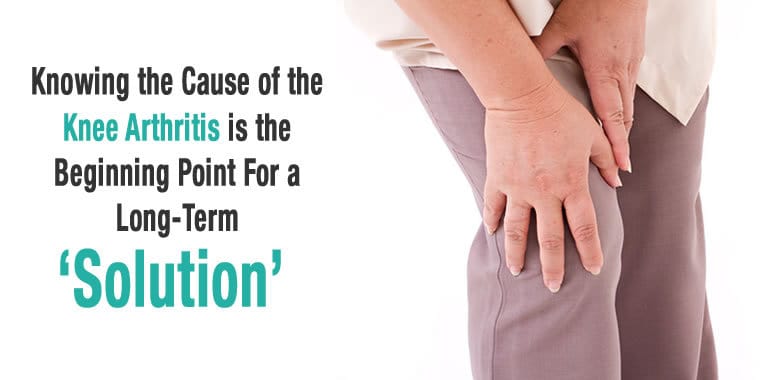
Winter is coming and we have finally got rain. Everything is nice and fresh! Yet, this season is not always easy for those who have arthritis. People with knee arthritis feel stiffer in the joints, especially in the morning, and they generally have more aches and pains. Arthritis changes the quality of one’s life. One in 4 adults in America suffer from it, and almost half of them have to limit their daily activities because of the joint pain.
What is the cause of knee arthritis? Knowing the cause of the knee arthritis is the beginning point for a long-term solution. It is very unfortunate that so many people blame age, employment, or injuries, and thereafter survive with the help of temporary patch-work such as taking pain pills, getting regular Steroid shots, and thinking that joint replacement is the ultimate solution. As we know, though, all of the interventions people often choose have detrimental side-effects. Let's take a look at a common, actual cause of knee arthritis.
First, we need to look very closely at the cartilage. Losing the integrity of the cartilage is one of the most significant signs of arthritis. The joint cartilage is the layer that absorbs the impact of human weight and motion. It is very flexible and very slippery; in fact, it’s 30 times more slippery than ice, therefore allowing human motion to be fast and smooth. The thickness of cartilage, which is a critical factor when it comes to bearing weight, varies even in the same joint – the point which bears the most weight has thicker cartilage.
Researches point out that, when people put weight on the thin area where the cartilage is not equipped to bear weight and motion, arthritis can build up. An example of this is seem in teen athletes: those who tear knee ligaments can develop arthritis within only a few weeks as they start to limp and change their walking patterns. The point is that any rapid changes in a walking pattern and exercise routine can result in worsening the integrity of the cartilage. Walking with toes out, limping, bending the knee, and leaning towards one side are all indications of overcompensation that can lead to damage of the cartilage. Furthermore, tightening of the muscles and soft tissues, as well as the inflammation of the bursa, result from those unhealthy guarding motions, too.
Finding and diagnosing the exact cause of the problem is the key to recovery. The evidence clearly indicates that therapy for knee arthritis makes a significant difference when we correctly diagnose the root cause of the problem. Deyle's study, done in 2005, is a great example of the evidence. The study compared a “wait-and-see” group to a “physical therapy” group. The therapy group showed a significant improvement, while the wait-and-see group did not. In the research, therapists thoroughly analyzed what the cause of the problem was, not only in the knee, but also in the ankle, foot, hip and even in the back. Thus, it is very important to find out what is going on – this is done by looking closely and thoroughly examining all possibilities. Thereafter, the root cause of the problem can be treated with manual therapy and re-education, thereby re-building a normal movement pattern.
So, finding the root cause of the problem is the key to your recovery. Stop blaming your age, job, or old injury for your knee pain. Don’t just accept the problem and take painkillers or medication – these things just aren’t beneficial in the long run. Experts can diagnose the root cause and give you the tools to take action in order o bring about real change in your life.
- Stop treating people like dead - March 25, 2024
- Stop Asking Me ‘Where are you from?” - March 25, 2024
- You Need the Right Diagnosis, not the Right Technique - November 25, 2020





